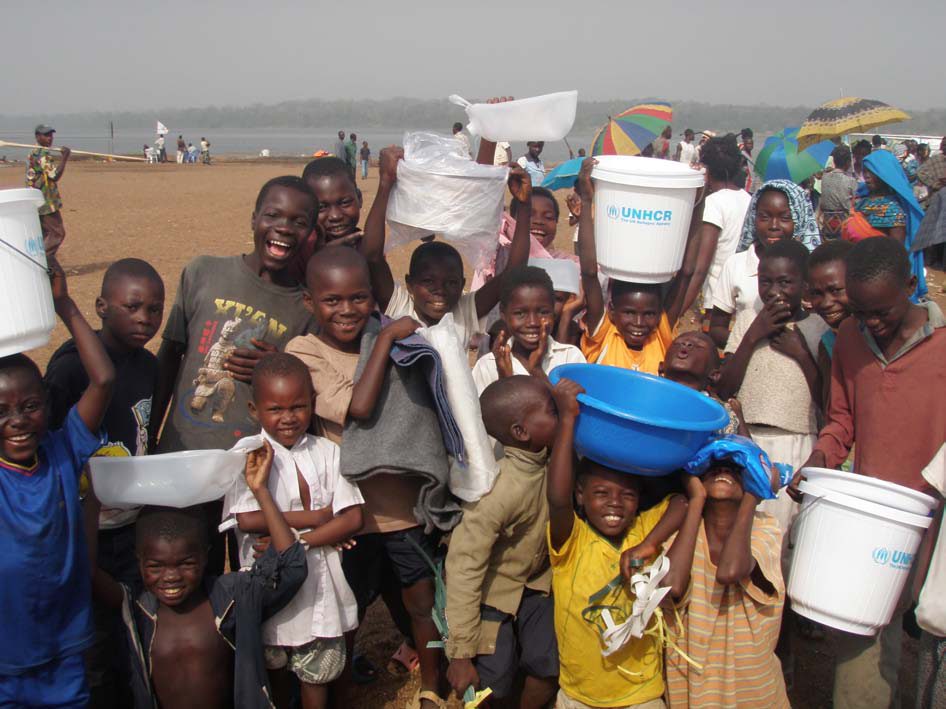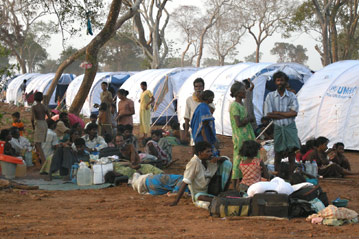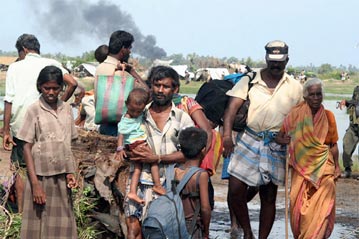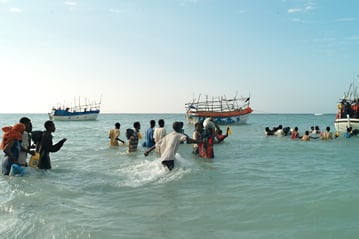Lives in limbo as terror resumes in eastern Chad
Lives in limbo as terror resumes in eastern Chad
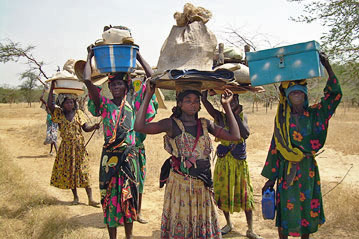
KOUKOU, Chad, November 1 (UNHCR) - With the end of the rainy season, a feared new wave of inter-ethnic violence has hit remote eastern Chad along its increasingly tense border with Sudan's strife-torn Darfur region.
In scenes of devastation similar to the carnage just across the border, at least 10 Chadian villages have been attacked, looted, burned and emptied by alleged Arab-led groups since early October. Dozens of people have been reported killed and many more wounded.
At least 2,000 Chadians were forced to flee several villages after they came under attack, or out of fear that they would eventually be targeted. Most of the displaced fled to areas around the UN refugee agency's Goz Amir refugee camp near the village of Koukou in south-eastern Chad.
UNHCR operates a dozen camps in eastern Chad for 218,000 refugees from Darfur. Now it must also contend with growing numbers of internally displaced Chadians as the Darfur crisis threatens to further destabilise the region. UNHCR has urged an international peace-keeping presence in eastern Chad.
Many of the attacked Chadian villages were hosting displaced people who had fled earlier this year before a rainy season lull in the violence. Some 50,000 Chadians were displaced prior to the latest violence.
The current hostilities, which erupted in early October and swiftly escalated, reportedly involved a dispute between ethnic Arabs and black African Dadjos. "War broke out in our village. People were killed. We don't even know yet who was killed," said a displaced Dadjo man, sitting under a tree with his family.
"Some of the attackers were on horseback. Others were on foot. Some were wearing military uniforms. They had no vehicles," he continued. "They told us: 'If you stay, we'll kill you. If you flee, we'll kill you.'"
Another man standing nearby recounted how Dadjo men from various villages had tried to form an ad hoc self-defence force to try to repel the heavily armed and predominantly Arab attackers.
In an effort to bring the situation under control, the prefect of Goz Beida is trying to get community leaders talking - going so far as to have Muslim Arab and Dadjo leaders swear on the Koran that they will not restart hostilities.
When the situation calmed later in October at the Goz Amir camp, which hosts 18,000 refugees from Darfur, aid workers were pleasantly surprised by what they found. The Sudanese refugees had already begun compiling lists of the Chadian displaced so food could be shared with them. Many of the newly displaced Chadians had themselves welcomed the Sudanese when they fled Darfur.
UNHCR and its partners, meanwhile, provided the displaced Chadians with basic relief items such as plastic sheeting for shelter, mosquito nets, buckets, jerry cans and soap.
"The situation of internally displaced people [IDPs] and refugees is very similar, it's just that the IDPs are still in their own country," a local security official told a UNHCR team on October 21. "Insecurity is the main problem here. I do not have the necessary resources to ensure security for the entire population - including myself," added the official.
The very next day, Chadian rebels temporarily occupied the town before moving on to Am Timan. Last April, rebels passed through the area in a failed bid to take the national capital N'Djamena.
Even though the displaced are anxious to return home before this month's harvest, UNHCR and its partners are preparing them for other possibilities. If insecurity prevents them from going home immediately, the Chadians will have to move to one of two sites in the area that have this far been designated for IDPs and made accessible to humanitarian agencies.
One of them, Habile, near Goz Amir, has nearly reached its capacity of 3,500 people. The displaced Chadians are also being encouraged to try to find shelter with family members who may reside in the area. To make ends meet while they try to decide what to do, many of the displaced look for wood or weave grass mats for sale at local markets.
Abdoulaye, who fled from Modeina to Goz Amir in March and moved to Habile in May, said he remained concerned about insecurity. "For the time being, we have more or less given up on the possibility of returning to Modeina in the near future," he said, adding that insecurity in the region left the future increasingly uncertain for growing numbers of Chadians.
By Matthew Conway in Koukou, Chad

